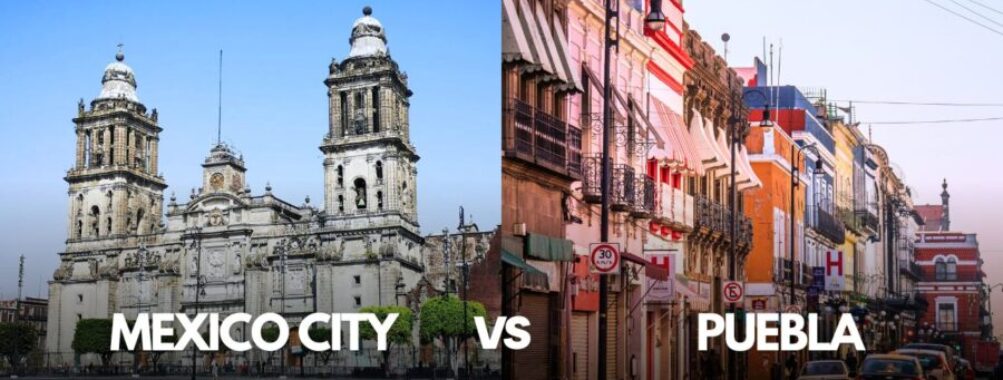
Mexico City vs Puebla: 5 Stunning Differences Between These Hidden Mexican Gems
You’ll find two very different Mexican experiences when comparing Mexico City and Puebla. Mexico City dazzles as the massive, bustling capital with endless attractions, while Puebla offers a more relaxed cultural immersion just two hours away. Puebla has a significantly lower population density, cheaper rent (about $455 less for a one-bedroom apartment), and slightly cooler temperatures than Mexico City.
Many travelers debate which city deserves their time. Puebla charms with its colonial architecture, famous cuisine (the birthplace of mole poblano!), and proximity to the Popocatépetl volcano. The city feels more manageable and less overwhelming than the capital. You can easily search flights to either destination, though some travelers find Puebla’s airport less congested.
If you’re on a budget, Puebla wins hands down. The overall cost of living in Mexico City runs about 18.5% higher than in Puebla. For travelers seeking authentic Mexican culture without the intensity of the capital, Puebla makes an excellent choice for your accommodations and home base.
Contents
- Historical Significance
- Mexico City’s Rich Past
- Puebla’s Historical Roots
- Cultural Insights
- Mexico City’s Cultural Mosaic
- Puebla’s Cultural Heritage
- Culinary Scene
- Mexico City’s Gastronomy
- Puebla’s Culinary Delights
- Educational Institutions
- Universities in Mexico City
- Puebla’s Academic Contributions
- Modern Developments and Urban Experience
- Skyscrapers and Metropolitan Lifestyle of Mexico City
- Puebla’s Urban Transformation
- Tourist Attractions
- Iconic Spots in Mexico City
- Puebla’s Must-See Locations
- Lifestyle and Leisure Activities
- Day-to-Day Life in Mexico City
- Recreation and Relaxation in Puebla
- Economic Factors
- Mexico City as an Economic Powerhouse
- Puebla’s Economic Landscape
- Frequently Asked Questions
- What are the top attractions to visit when traveling between Mexico City and Puebla?
- How does the culinary experience in Puebla differ from that in Mexico City?
- Can you describe the historical significance of Puebla in relation to Mexico City?
- What transportation options are available for tourists traveling from Mexico City to Puebla?
- Which city offers a more authentic cultural experience, Puebla or Mexico City?
- In terms of local crafts and shopping, how does Puebla compare to Mexico City?
- More Travel Guides
Historical Significance
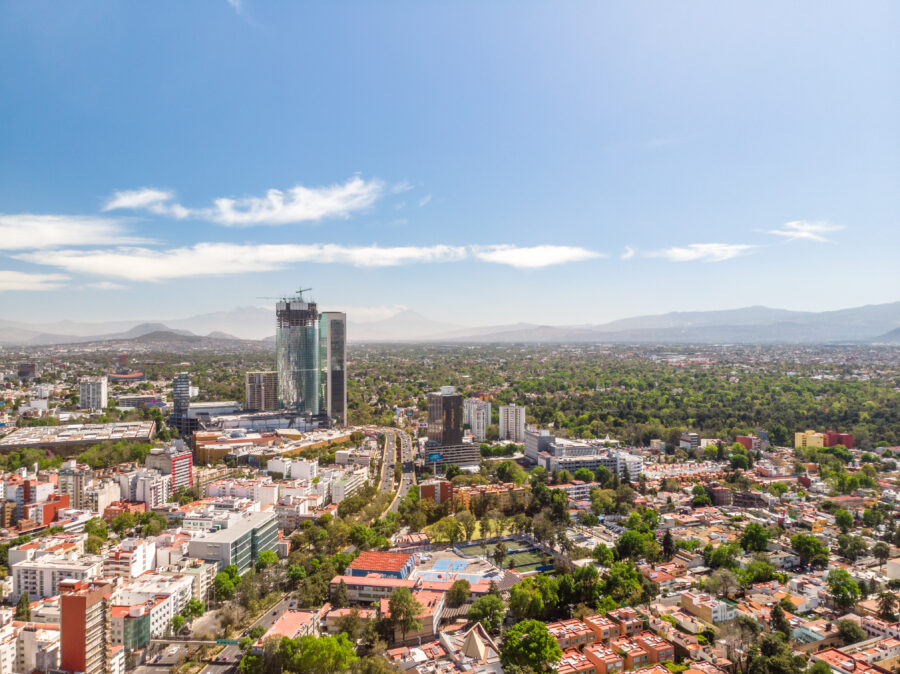
Both Mexico City and Puebla offer visitors a deep dive into Mexico’s rich history. These cities have played crucial roles in shaping the country’s identity, though in distinctly different ways.
Mexico City’s Rich Past
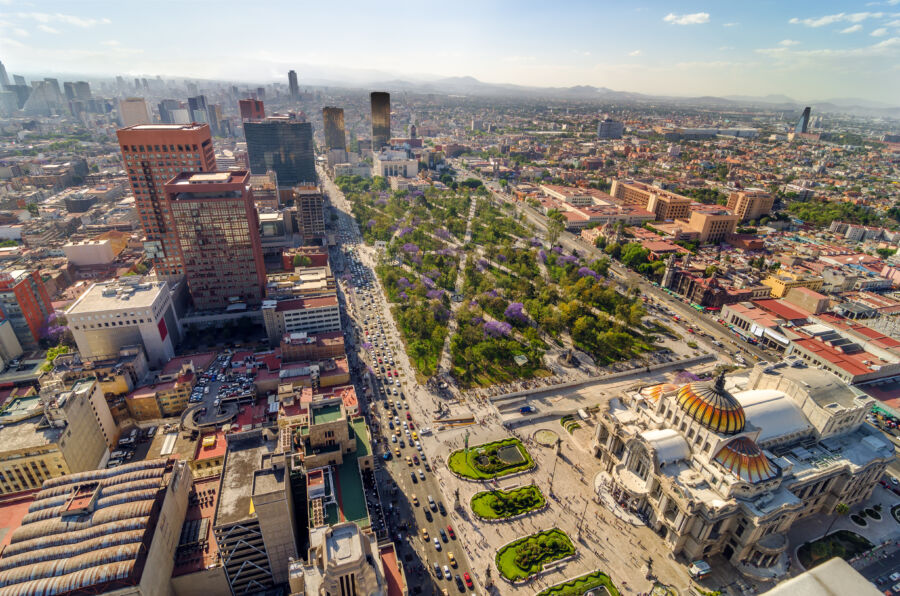
Mexico City stands on the ruins of Tenochtitlan, the ancient Aztec capital. When Spanish conquistadors arrived in the 1500s, they were amazed by the city built on an island in Lake Texcoco. They destroyed much of the Aztec city and built their colonial center.
The historic center, known as Zocalo, showcases layers of history from pre-Hispanic times through the colonial period and into modern Mexico. The Metropolitan Cathedral and National Palace sit where Aztec temples once stood.
Mexico City served as the capital of New Spain during colonial times. It later became the center of Mexico’s independence movement and revolution. The city’s museums, particularly the National Museum of Anthropology, house countless historical treasures.
Puebla’s Historical Roots
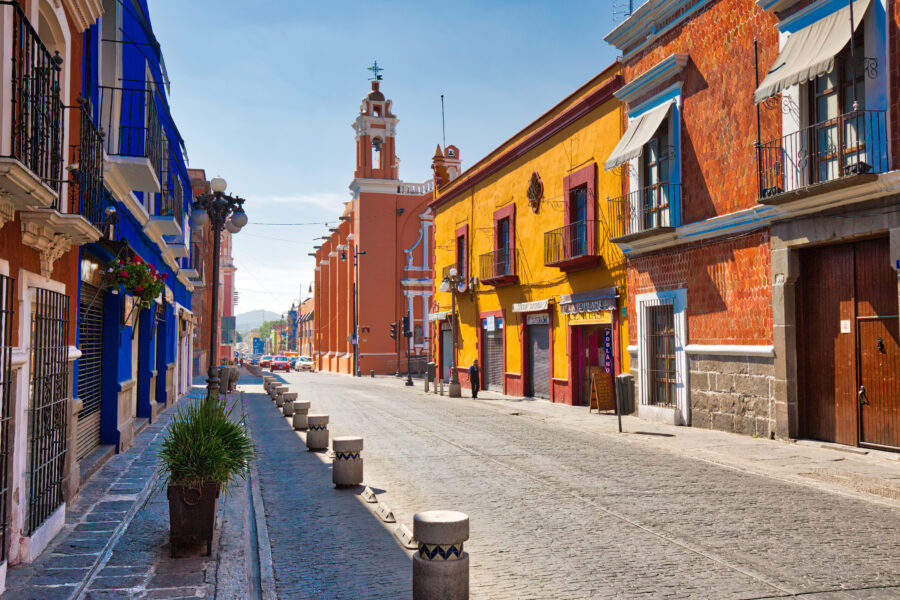
Unlike Mexico City, Puebla was founded directly by Spanish settlers in 1531. The city wasn’t built over an existing Indigenous settlement, making it unique among major Mexican cities. Spaniards created Puebla to secure the vital trade route between Mexico City and Veracruz.
Puebla’s historic center earned UNESCO World Heritage status in 1987 for its exceptional colonial architecture. The city features over 2,600 colonial buildings adorned with colorful Talavera tiles. These structures blend European and Indigenous influences into a distinctive style.
During the colonial period, Puebla grew into one of Mexico’s most important cities economically and culturally. The city also played a significant role in Mexican history as the site of the famous Battle of Puebla on May 5, 1862, when Mexican forces defeated the French army – the event celebrated as Cinco de Mayo.
Cultural Insights
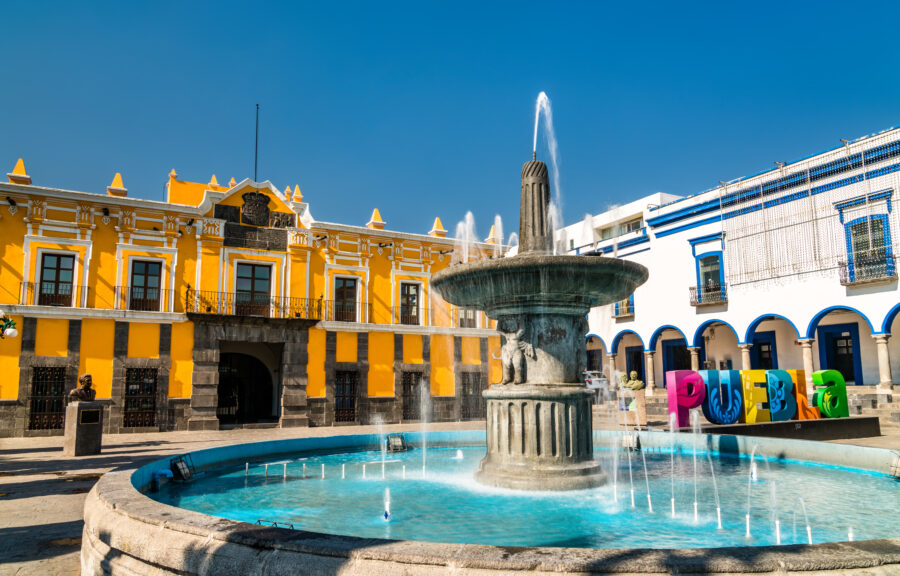
Mexico City and Puebla offer visitors two distinct cultural experiences. Each city showcases unique traditions, architecture, and artistic expressions that reflect its historical development and local identity.
Mexico City’s Cultural Mosaic

Mexico City boasts an incredible mix of ancient and modern influences. The city houses over 150 museums, including the world-famous National Museum of Anthropology, where you can explore Mexico’s pre-Hispanic heritage.
Walking through neighborhoods like Coyoacán or Roma Norte feels like traveling through different periods. Street art decorates many walls, showing the city’s vibrant contemporary creative scene.
The blend of indigenous and Spanish colonial elements is visible everywhere. In the historic center, ancient Aztec ruins at Templo Mayor sit beside the Metropolitan Cathedral.
Mexico City’s cultural scene never sleeps! From traditional mariachi performances in Plaza Garibaldi to cutting-edge art galleries in Polanco, the city embraces conventional and modern expressions.
Puebla’s Cultural Heritage
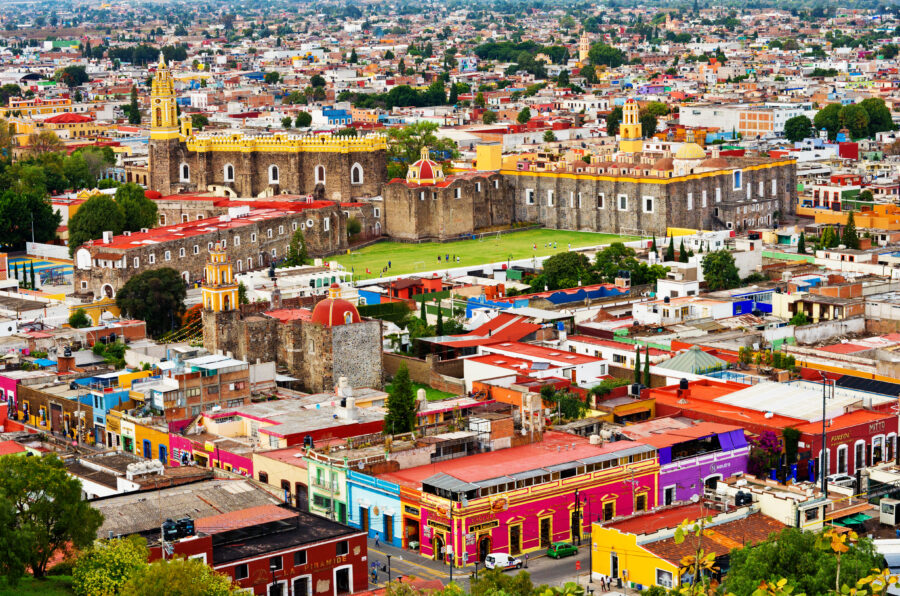
Puebla preserves its colonial past with remarkable dedication. The historic center features over 2,600 colonial buildings adorned with colorful Talavera tiles, earning it UNESCO World Heritage status.
Unlike Mexico City’s urban sprawl, Puebla feels more contained and traditional. The city’s baroque architecture shines in buildings like the stunning Rosary Chapel, often called the “Eighth Wonder of the World.”
Just 20 minutes from Puebla lies Cholula, home to the largest pyramid base in the world, with a Spanish church built right on top. This single site perfectly symbolizes the cultural fusion that defines the region.
Puebla’s cuisine represents an important cultural treasure. The city gave birth to iconic dishes like mole poblano and chiles en nogada, which blend indigenous ingredients with Spanish cooking techniques.
Local artisans continue centuries-old traditions in pottery, textiles, and Talavera ceramics, keeping Puebla’s unique cultural identity alive through their craftsmanship.
Culinary Scene
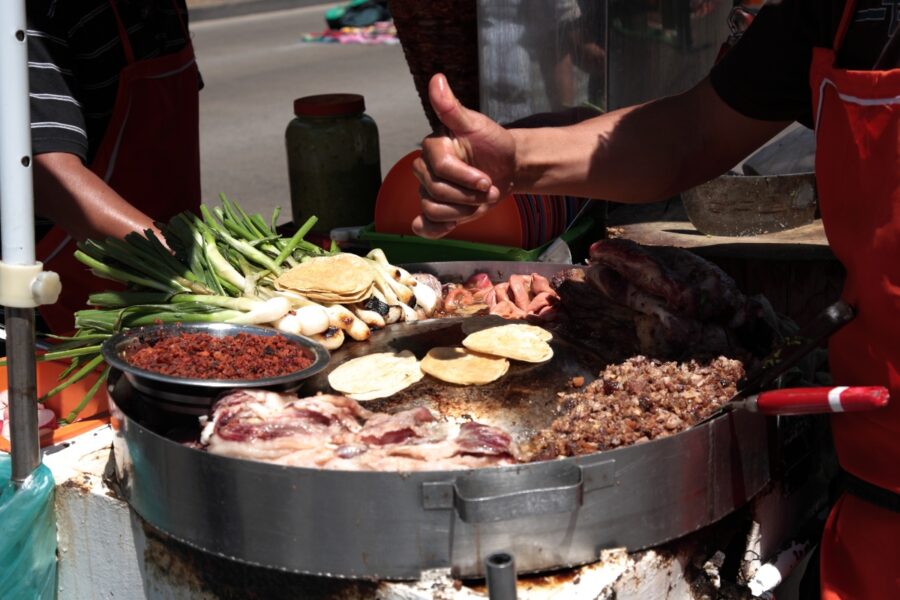
Both Mexico City and Puebla offer incredible food experiences that showcase Mexico’s rich culinary heritage. Each city has its unique flavors and specialties that attract food lovers from around the world.
Mexico City’s Gastronomy
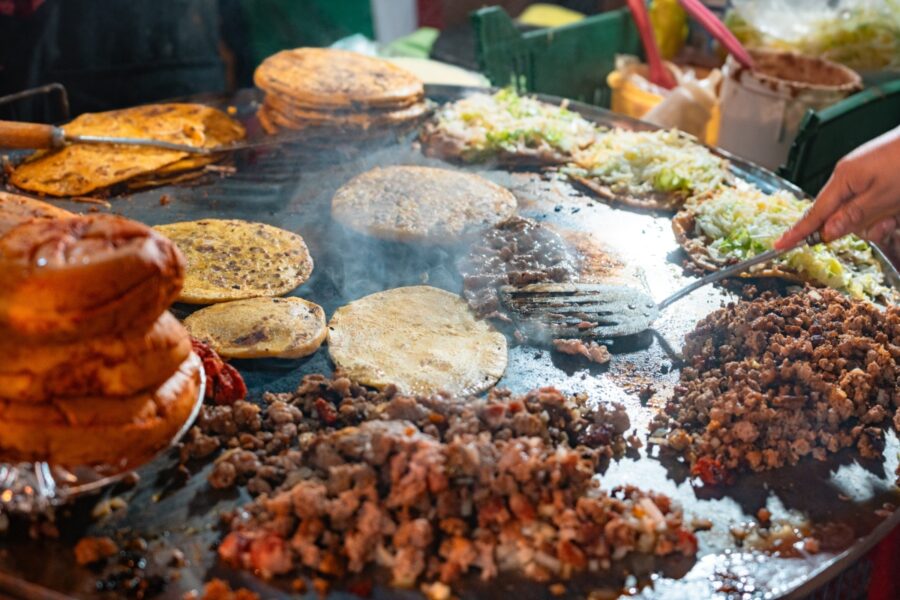
Mexico City’s food scene is incredibly diverse and vibrant. You’ll find everything from street food vendors selling tacos al pastor to high-end restaurants reimagining traditional dishes with modern techniques.
The city’s markets, like Mercado de San Juan, are foodie paradises where you can sample exotic fruits, local cheeses, and freshly prepared dishes. Don’t miss trying the city’s famous tacos from street stands with waiting lines of locals.
For those interested in fine dining, Mexico City boasts several restaurants ranked among the world’s best. Places like Pujol and Quintonil showcase Mexican ingredients innovatively, putting the city on the global culinary map.
Street food tours have become a popular way to experience the city’s food culture, with guides helping visitors navigate the bewildering array of options and flavors.
Puebla’s Culinary Delights
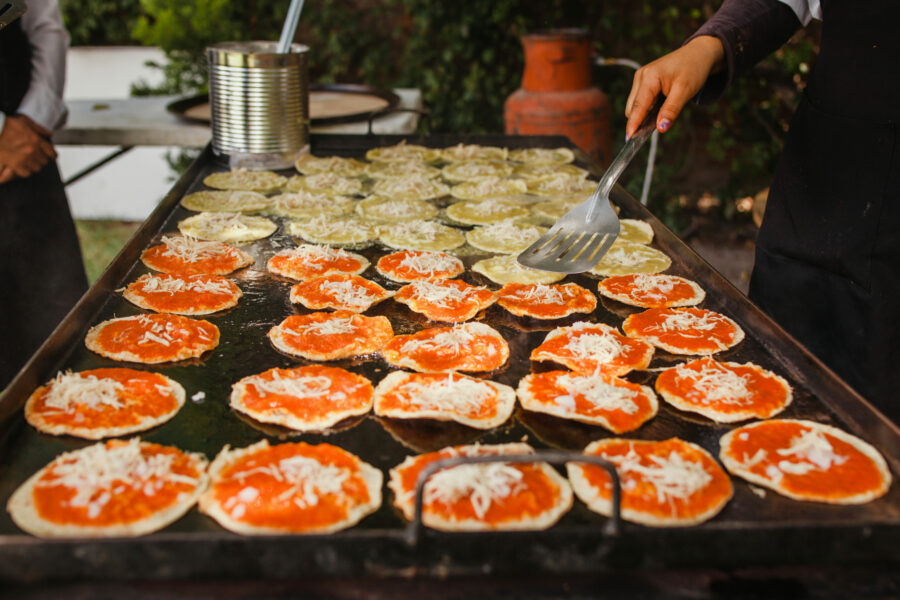
Puebla is considered one of Mexico’s greatest food destinations, with dishes that can’t be found elsewhere. The city is the birthplace of mole poblano, a complex sauce with chocolate and numerous spices considered one of Mexico’s national dishes.
The cemita is Puebla’s signature sandwich – a sesame seed roll stuffed with milanesa (breaded meat), quesillo cheese, avocado, and chipotles. Local markets like Mercado El Carmen offer authentic versions that showcase why this humble sandwich has gained cult status.
According to travelers, Puebla offers more unique regional dishes than other Mexican destinations. The city’s culinary scene balances traditional cooking with contemporary eateries that respect ancestral techniques.
Chalupas, chiles en nogada, and memelas are other must-try specialties throughout the city, from street vendors to family-run restaurants that have been perfecting these recipes for generations.
See Related: Mexico City vs Oaxaca: Essential Differences to Know Before Your 2025 Mexican Adventure
Educational Institutions
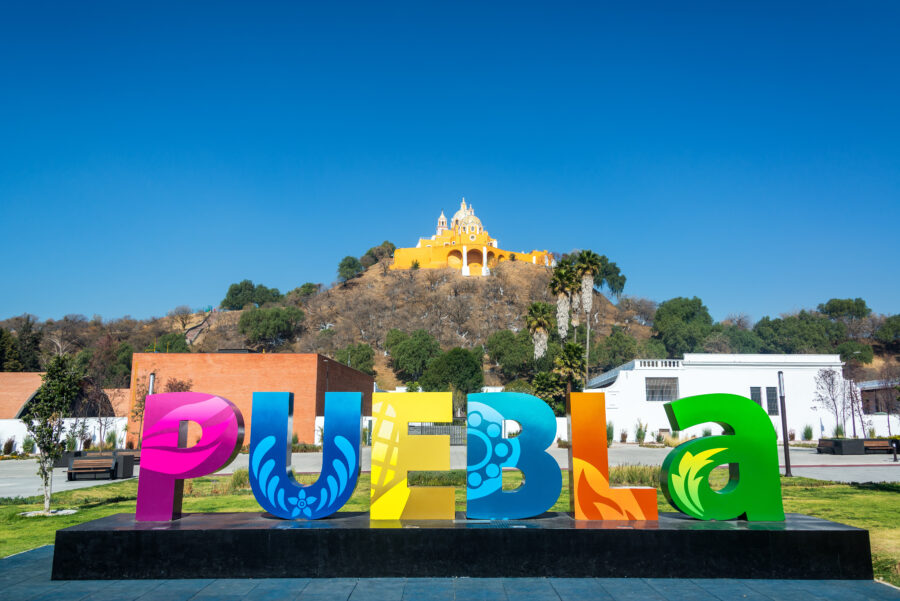
Both Mexico City and Puebla stand out as major educational hubs in Mexico. They host prestigious universities and diverse academic offerings. The educational landscape in these cities shapes their cultural identity and attracts thousands of students from across Mexico and worldwide.
Universities in Mexico City
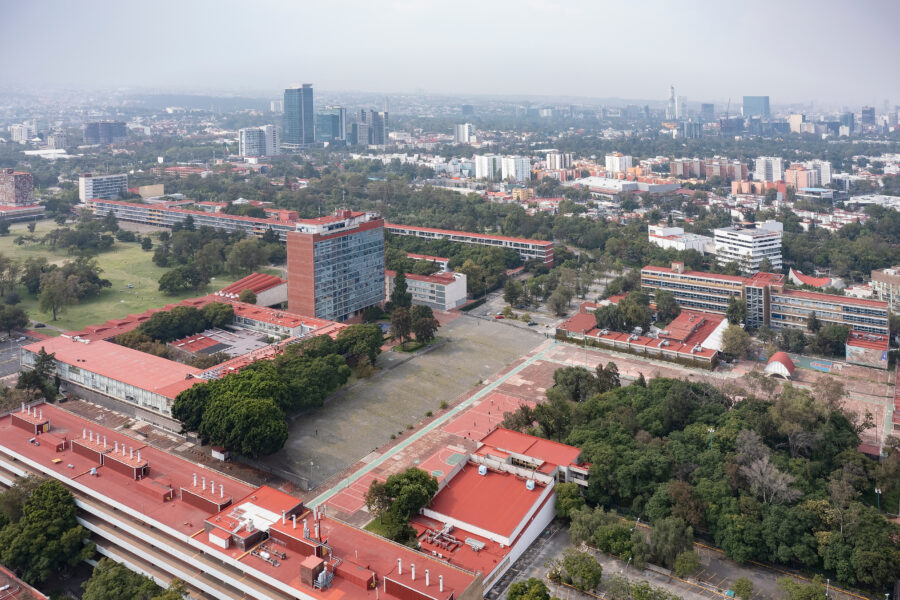
Mexico City boasts an impressive array of higher education institutions, with the Universidad Nacional Autonoma de Mexico (UNAM) leading the pack. UNAM isn’t just any university – it’s one of Latin America’s most prestigious and largest universities!
The city is also home to the Instituto Politécnico Nacional (IPN), focusing on engineering and scientific research. Many private universities like Tecnológico de Monterrey’s Mexico City campus and Universidad Iberoamericana offer high-quality education, too.
Students in Mexico City enjoy access to massive libraries, cutting-edge research facilities, and countless museums that complement their education. The city’s educational environment is buzzing with academic conferences, cultural exchanges, and international partnerships.
Puebla’s Academic Contributions
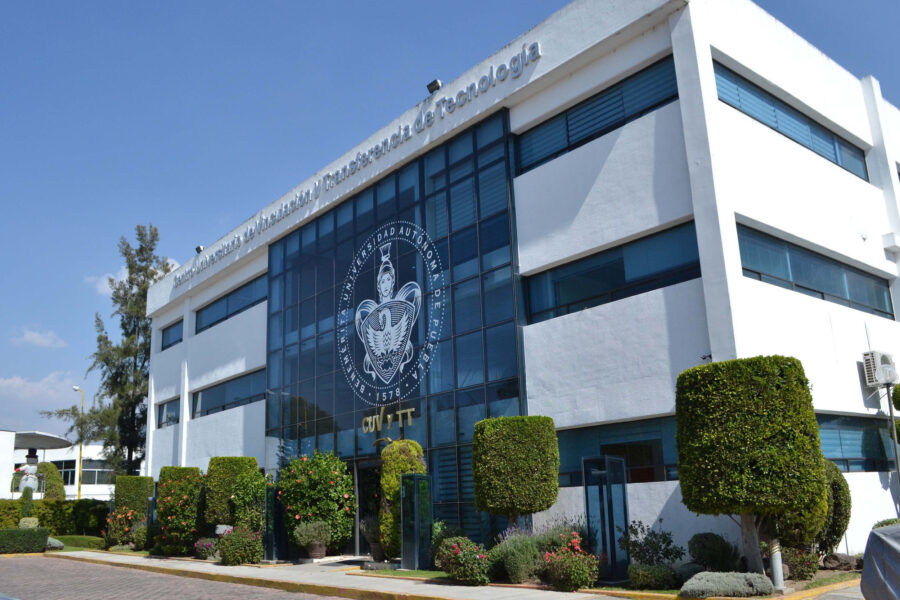
Puebla has earned its reputation as Mexico’s second-most important educational center after the capital. The Benemérita Universidad Autónoma de Puebla (BUAP) is the city’s flagship public university, with a rich history and strong academic programs.
The Spanish Institute of Puebla attracts many international students looking to learn Spanish in an immersive environment. Many visitors choose Puebla for language studies because of its clear accent and cultural richness.
Puebla’s universities benefit from the city’s lower cost of living than Mexico City, making it especially attractive for students on a budget. The colonial setting provides a unique backdrop for learning, with many schools housed in historic buildings.
The city’s compact size makes campus life more accessible, with most academic institutions within easy reach of downtown. Puebla’s strong student population contributes to many neighborhoods’ vibrant, youthful atmosphere.
Modern Developments and Urban Experience

Mexico City and Puebla have evolved significantly in recent years, balancing their rich histories with modern urban development. Each city offers a distinct urban experience shaped by different growth patterns and local priorities.
Skyscrapers and Metropolitan Lifestyle of Mexico City
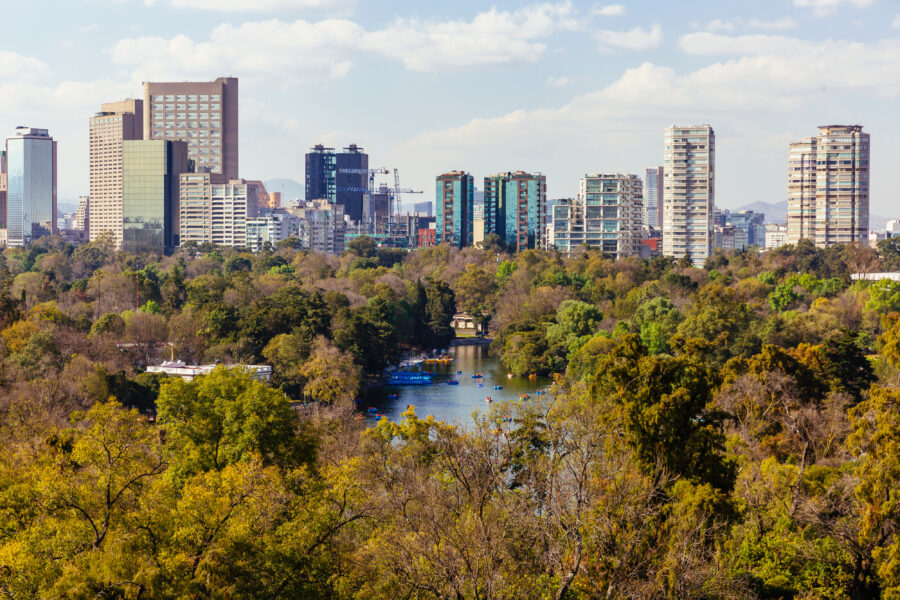
Mexico City’s skyline showcases its status as a global metropolis. Standing at 246 meters, the iconic Torre Reforma represents the city’s architectural ambitions. The Reforma Avenue corridor features gleaming glass towers housing international corporations and luxury hotels.
The city embraces a fast-paced metropolitan lifestyle with world-class shopping centers like Antara Fashion Hall and Polanco’s upscale boutiques. Public transportation includes one of Latin America’s most extensive metro systems, though traffic congestion remains a daily challenge.
Tech hubs and co-working spaces have multiplied in neighborhoods like Roma and Condesa, attracting digital nomads and entrepreneurs. However, this urban density comes at a cost—Mexico City’s population density is significantly higher than Puebla’s, creating both vibrant energy and urban challenges.
Puebla’s Urban Transformation
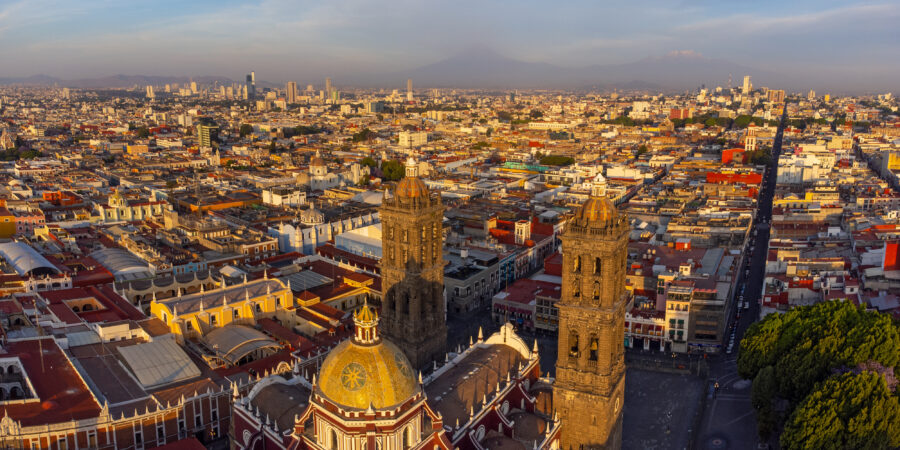
Puebla has undergone thoughtful urban renewal while preserving its colonial character. The Angelópolis district represents the city’s modern face, with contemporary shopping centers, business towers, and upscale residential developments.
Rent prices remain notably lower than in Mexico City – approximately $455 cheaper for a one-bedroom apartment, according to recent data. This affordability has attracted young professionals and families seeking urban amenities without Mexico City’s intense pace.
The city’s artistic spirit thrives in dedicated areas like the “graffiti zone,” where street art and creative expression are celebrated. Modern museums, including the impressive International Museum of Baroque and the Modern Art Museum, showcase Puebla’s commitment to contemporary culture.
Puebla’s transformation maintains a human scale that Mexico City sometimes lacks. With slightly cooler temperatures (about 2.3°C lower) and less congestion, Puebla offers modern conveniences in a more manageable urban package.
Tourist Attractions
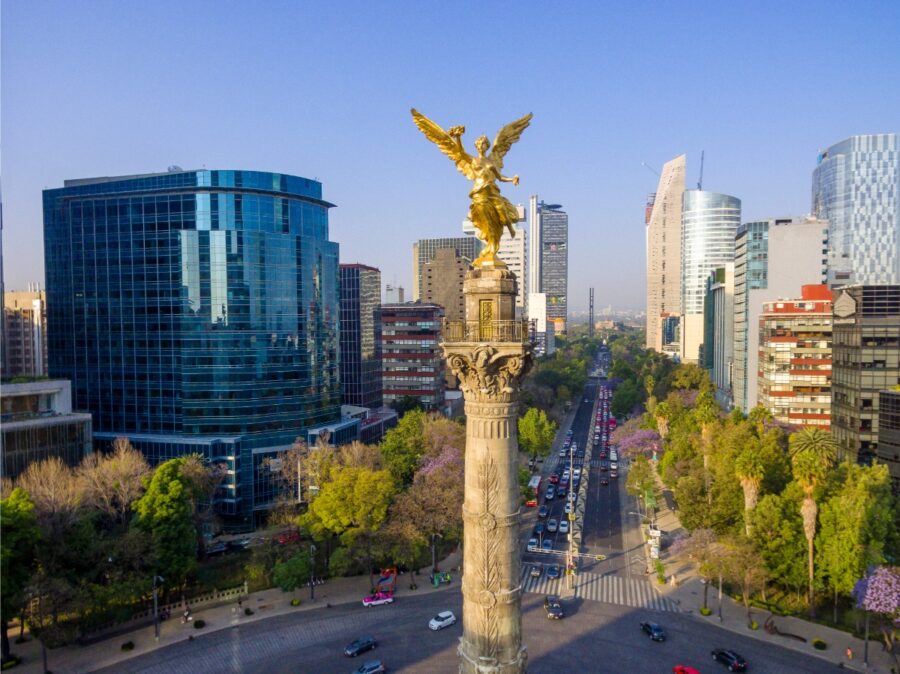
Mexico City and Puebla offer incredible cultural experiences with their mix of ancient history and modern attractions. Visitors can explore world-class museums, historical sites, and vibrant neighborhoods that showcase Mexico’s rich heritage.
Iconic Spots in Mexico City

Mexico City is packed with must-see attractions that could fill weeks of exploration. The historic Zócalo (main square) sits at the heart of the city, surrounded by the Metropolitan Cathedral and National Palace, which has its famous Diego Rivera murals.
The ancient ruins of Templo Mayor offer a glimpse into the Aztec civilization that once thrived here.
Art lovers shouldn’t miss the Frida Kahlo Museum (Casa Azul) in Coyoacán, where the iconic artist lived and worked. The Museum of Anthropology houses the most important collection of pre-Hispanic artifacts in Mexico.
Chapultepec Park provides a green escape with its castle, lakes, and multiple museums and attractions. Don’t overlook the floating gardens of Xochimilco, where colorful trajineras (boats) navigate ancient canals.
Puebla’s Must-See Locations
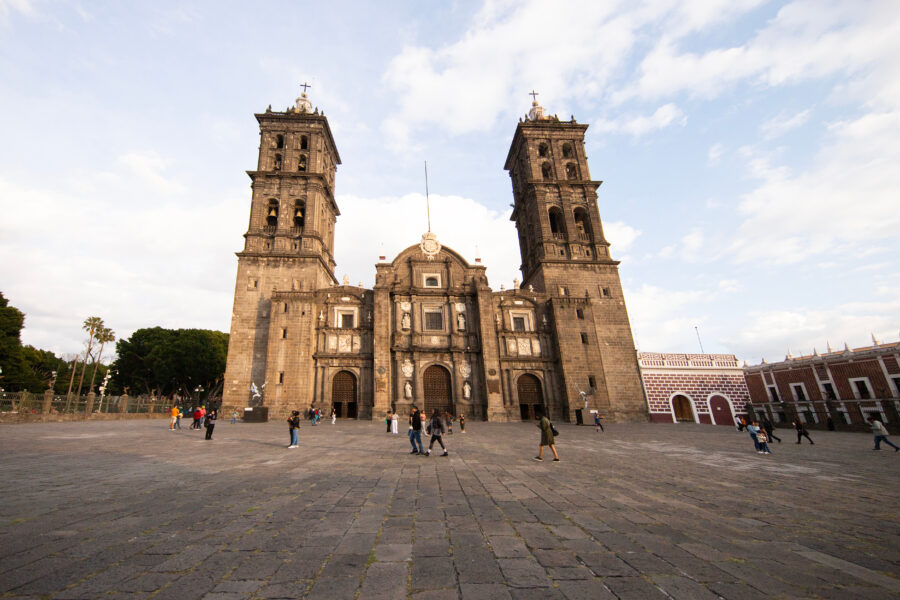
Puebla charms visitors with its well-preserved colonial architecture and vibrant culture. The historic center, a UNESCO World Heritage site, features stunning buildings adorned with colorful Talavera tiles and over 70 churches.
The magnificent Puebla Cathedral dominates the main square, while the Rosary Chapel in Santo Domingo Church dazzles with its gold-leaf decoration.
Just outside Puebla lies Cholula, home to the Great Pyramid (larger by volume than Egypt’s Great Pyramid of Giza) with a colonial church built on top. The tunnels beneath offer a fascinating glimpse into ancient engineering.
Art enthusiasts will appreciate Puebla’s cultural attractions including the modern art museum and the Artists Alley. The colorful “graffiti zone” showcases impressive street art that reflects the city’s creative spirit.
The markets of Puebla provide authentic cultural experiences where you can shop for traditional crafts and sample local cuisine.
See Related: Most Breathtaking Places to Visit in the World (Travel Guide)
Lifestyle and Leisure Activities
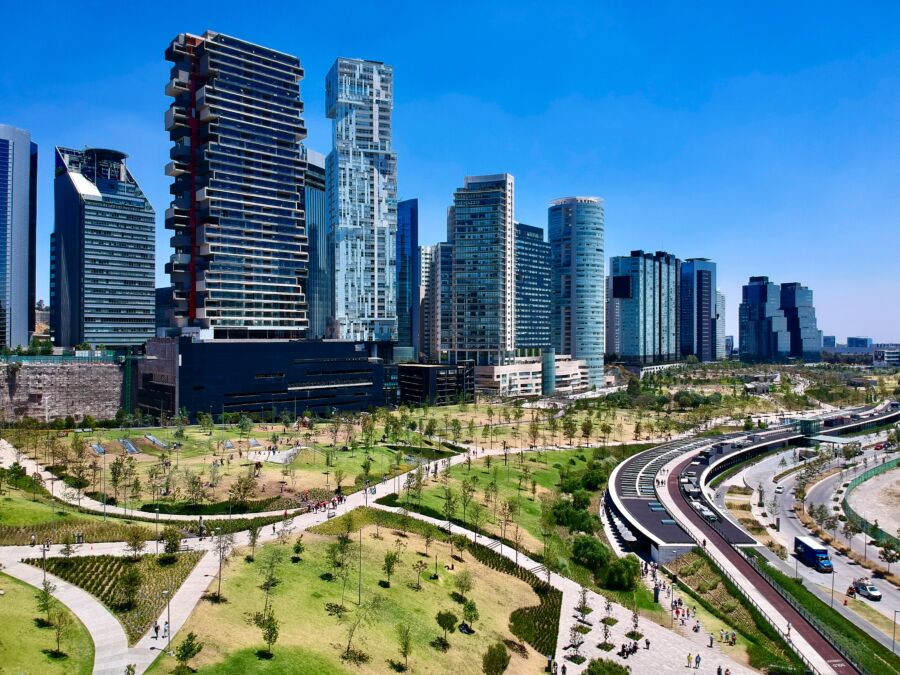
Life in Mexico City and Puebla offers distinct daily rhythms and recreational options shaped by each city’s unique character. Both destinations provide rich cultural experiences but with notably different paces and atmospheres.
Day-to-Day Life in Mexico City
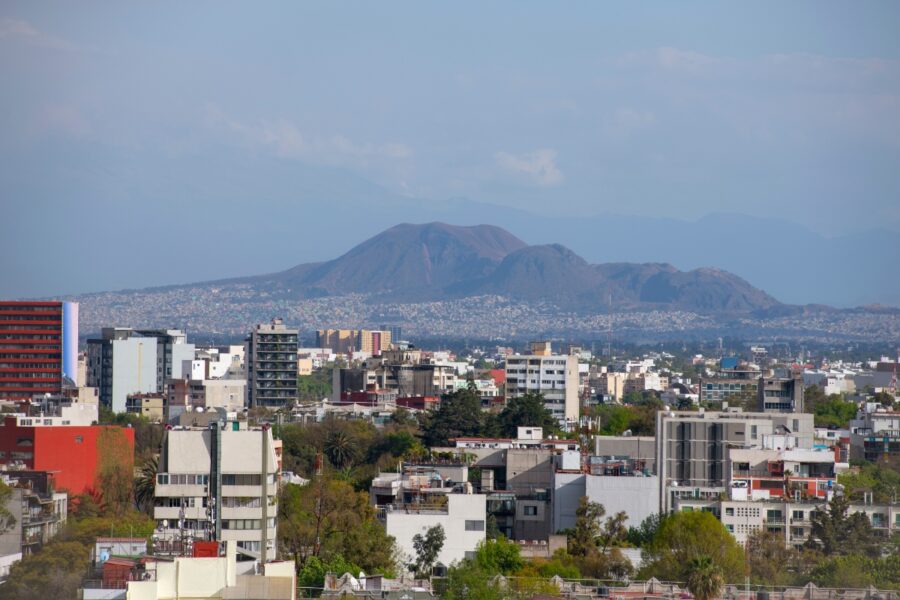
Mexico City buzzes with energy and endless possibilities. The capital’s massive size means residents often commute more, with many using the extensive metro system or ride-sharing apps to navigate the sprawling urban landscape.
The city never seems to sleep! Coffee shops open early, while nightlife spots keep the lights on until dawn. Many chilangos (Mexico City locals) start their mornings with quick street food breakfasts – think fresh tamales or atole from corner vendors.
The population density is significantly higher than in Puebla, creating a faster-paced environment. Locals often juggle busy work schedules with social gatherings at the city’s countless restaurants, parks, and cultural venues.
Walkability varies dramatically by neighborhood. Areas like Roma, Condesa, and Polanco offer pedestrian-friendly streets lined with cafes and boutiques, while other districts require transportation to get around comfortably.
Recreation and Relaxation in Puebla
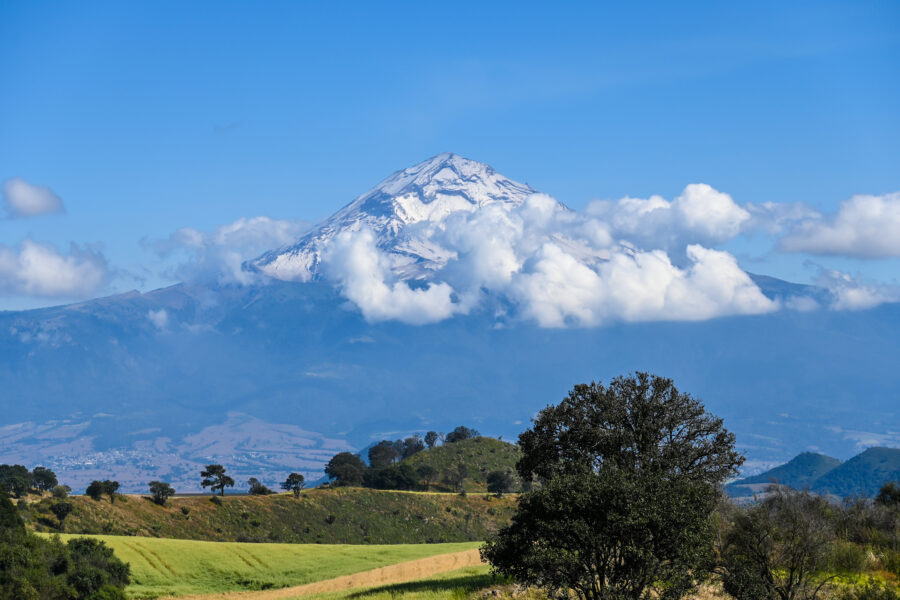
Puebla offers a more relaxed lifestyle with a distinctly different rhythm than the capital. The historic center, with its colorful colonial architecture and cobblestone streets, encourages leisurely strolls and slower-paced exploration.
Weekend activities often center around the zócalo (main square), where families gather to enjoy street performers, ice cream, and people-watching. The city’s numerous parks provide green spaces for picnics and outdoor exercise without the crowds of Mexico City.
Puebla’s recreational options extend to nearby natural attractions. Adventurous types can visit Popocatépetl and Iztaccíhuatl volcanoes for hiking, while history buffs explore archaeological sites like Cholula.
The food scene deserves special mention – dining in Puebla feels less rushed, with lengthy lunches (comida) being an important social ritual. Restaurants serving traditional Poblano dishes like mole poblano and chiles en nogada become gathering spots for extended family meals and celebrations.
Economic Factors
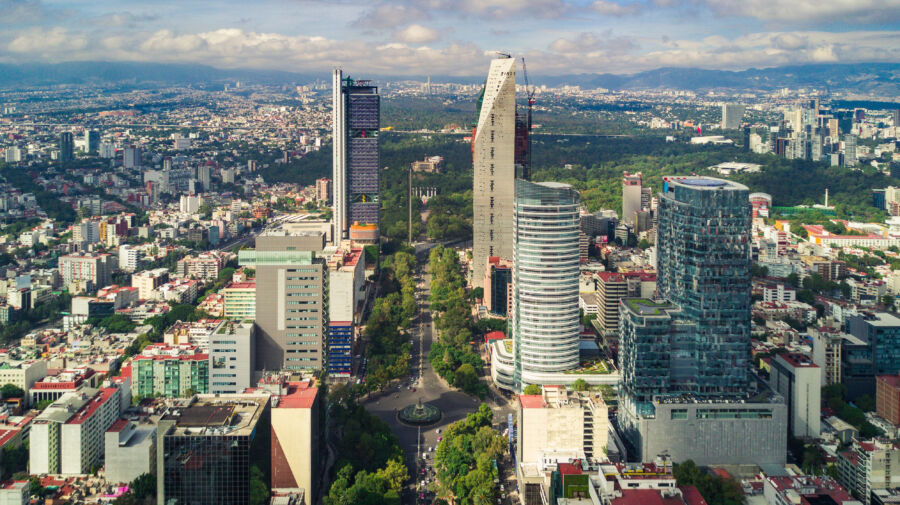
Money matters when comparing these two Mexican cities. Both have unique economic strengths that affect everything from job opportunities to cost of living for residents and travelers alike.
Mexico City as an Economic Powerhouse
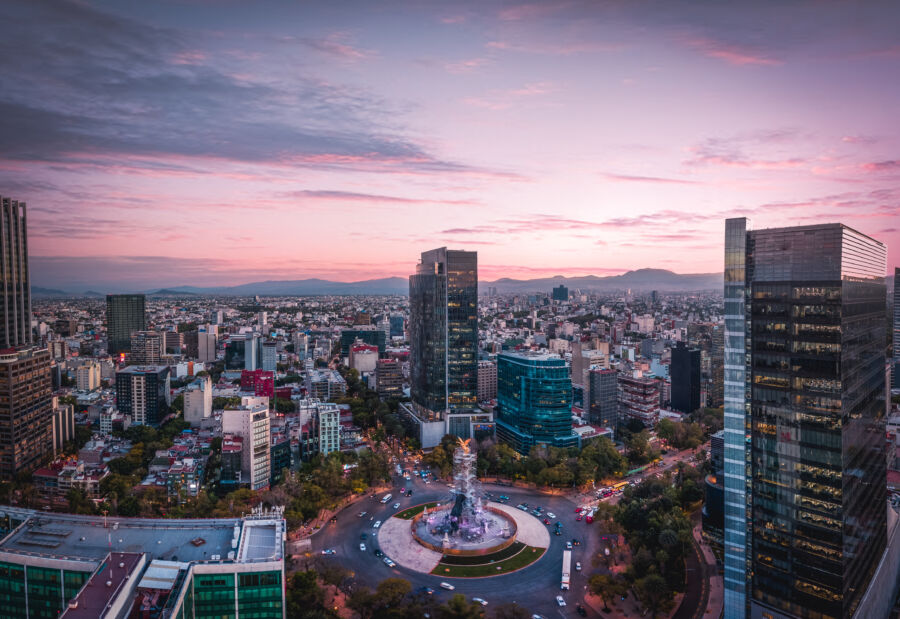
Mexico City stands as the nation’s undisputed economic hub. With an economically active population of 5.1 million people, it forms the beating heart of Mexican commerce. The workforce consists of nearly 4.89 million people, with a fairly balanced gender distribution (46.9% women and 53.1% men).
The capital city generates a massive portion of Mexico’s GDP, dwarfing most other Mexican cities combined. Its economy features a diverse mix of industries including finance, technology, media, and government services. Major international corporations have established regional headquarters here, creating a competitive job market with higher average salaries.
This economic strength translates to more developed infrastructure but also higher costs. Rent prices notably exceed those in Puebla, with one-bedroom apartments averaging approximately $455 more per month.
Puebla’s Economic Landscape
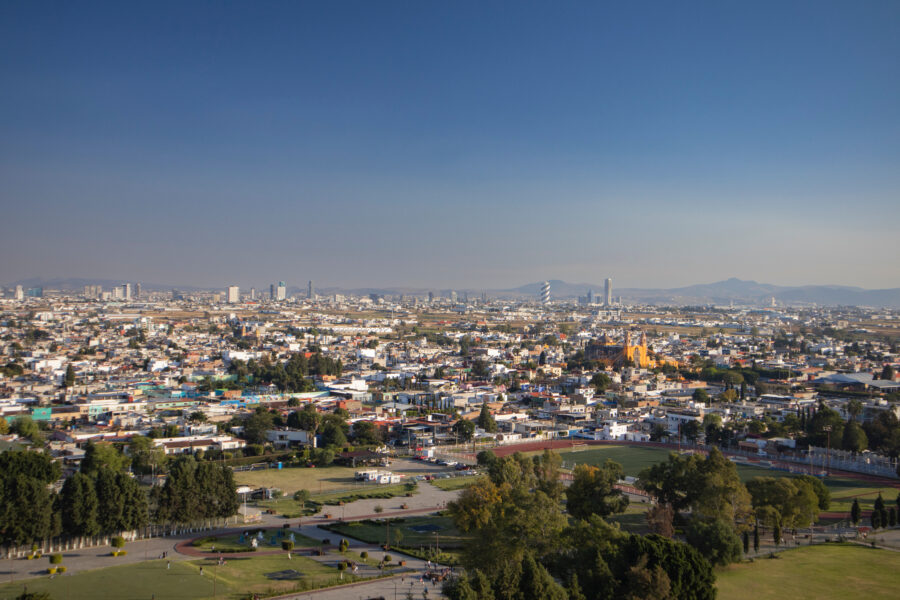
Puebla plays a significant role in Mexico’s economy despite being smaller than the capital. In 2022, the state of Puebla contributed 3.4% of Mexico’s total GDP, approximately $50 billion. This makes it an important economic center in its own right.
The city has developed a strong manufacturing base, particularly in automotive production. Volkswagen and Audi have major plants here, creating thousands of jobs. These international investments have helped modernize Puebla’s economy while preserving its traditional industries.
Cost of living represents Puebla’s major economic advantage. Housing costs substantially less, with rental prices dramatically lower than Mexico City. This affordability extends to food, transportation, and entertainment.
Puebla also benefits from tourism revenue, as visitors come to experience its colonial architecture, cuisine, and cultural attractions while enjoying lower prices than in the capital.
See Related: The Top Vacation Spot in the World: Discover the Ultimate Destination
Frequently Asked Questions
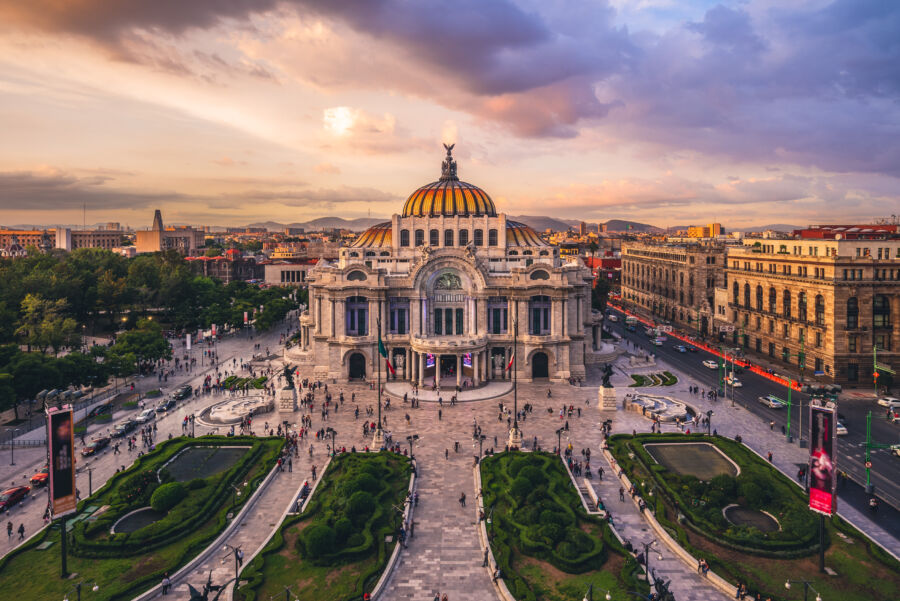
Traveling between Mexico City and Puebla brings up many common questions about attractions, food, and logistics. These two cities offer distinct experiences despite being only a few hours apart.
What are the top attractions to visit when traveling between Mexico City and Puebla?
Between these two cities, you’ll find incredible historic and cultural sites. In Mexico City, the Zocalo (main square), Frida Kahlo Museum, and Teotihuacan pyramids are must-visits. The city’s Metropolitan Cathedral and National Palace showcase stunning architecture.
For Puebla, the historic center is a UNESCO World Heritage site with beautiful colonial buildings. The Chapel of the Rosary inside Santo Domingo Church features gold-leaf decoration that takes your breath away. Cholula, just outside Puebla, has one of the largest pyramids by volume in the world.
How does the culinary experience in Puebla differ from that in Mexico City?
Puebla is the birthplace of iconic dishes like mole poblano (chocolate-chili sauce) and chiles en nogada (stuffed peppers with walnut sauce). The city takes pride in its traditional recipes that have been preserved for generations.
Mexico City offers more diverse food options, from high-end restaurants to incredible street food. You’ll find regional dishes from all over Mexico here. The capital’s culinary scene tends to be more innovative and fusion-oriented.
Both cities have vibrant markets where you can sample local specialties. Puebla’s markets focus more on regional ingredients and traditional cooking.
Can you describe the historical significance of Puebla in relation to Mexico City?
Puebla was founded in 1531 as a Spanish colonial city, while Mexico City was built atop the Aztec capital Tenochtitlan. Puebla was designed as a city for Spanish settlers rather than being built around an existing indigenous settlement.
One of Puebla’s proudest moments came on May 5, 1862, when Mexican forces defeated the French army there. This victory is celebrated as Cinco de Mayo. The city maintains more of its colonial character than Mexico City.
Mexico City served as the center of both Aztec and colonial power. Its history spans from pre-Hispanic times through independence and revolution to the modern era, making it more layered historically.
What transportation options are available for tourists traveling from Mexico City to Puebla?
The most popular way to travel between these cities is by bus. ADO and other companies offer frequent luxury buses that take about 2 hours. These buses are comfortable with amenities like WiFi and restrooms.
Rental cars provide flexibility, with the journey taking around 2 hours via the paid highway. This option lets you stop at places like Cholula along the way.
Tour companies offer day trips from Mexico City to Puebla, handling all transportation details. This is convenient but gives you less time to explore at your own pace.
Which city offers a more authentic cultural experience, Puebla or Mexico City?
Puebla offers a more concentrated traditional Mexican experience with its well-preserved colonial architecture and traditional culture. The pace is slower, allowing visitors to absorb local customs and traditions.
Mexico City presents a more diverse cultural landscape that represents all of Mexico. It’s more cosmopolitan and international while still maintaining strong Mexican identity in different neighborhoods.
Both are “authentic” in different ways. Puebla showcases traditional Mexico with less international influence, while Mexico City shows how traditional and modern Mexico blend together today.
In terms of local crafts and shopping, how does Puebla compare to Mexico City?
Puebla is famous for its Talavera pottery, a colorful ceramic tradition dating back to colonial times. You’ll find shops throughout the city selling authentic pieces with certification of origin. The city also specializes in textiles from surrounding villages.
Mexico City offers more variety in shopping experiences, from high-end malls to artisan markets. The capital has crafts from all regions of Mexico, making it a one-stop shop for handicrafts from across the country.
Prices in Puebla tend to be lower than in Mexico City for similar items. Many visitors find the shopping experience more relaxed and personal in Puebla, while Mexico City provides more options but can feel overwhelming.



